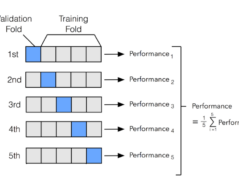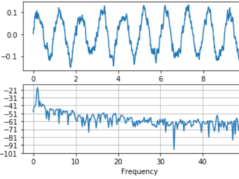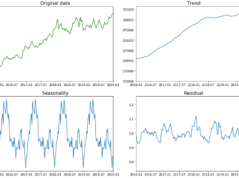
Recurrent Neural Networks: Financial Equity Markets
Introduction to RNNs
In the current era, technology permeates every corner of our lives. An exciting shift has occurred in the financial markets, with Artificial Intelligence (AI) and Machine Learning (ML) stepping into the spotlight. One of these ML technologies stands out for its unique capabilities - the Recurrent Neural Network (RNN). Particularly significant in the Indian context, RNNs hold immense potential to revolutionize predictive modelling in finance.
Understanding Recurrent Neural Networks
At the heart of RNNs lies a simple yet powerful concept - memory. Traditional neural networks process inputs independently, disregarding sequence or order. However, this approach falls short in many real-world scenarios, such as stock market data or speech recognition.
RNNs differ fundamentally. They remember. They understand that order matters. By sequentially processing inputs and using information from previous steps in their calculations, RNNs can handle time-series data effectively.
Benefits of RNN in Financial Equity Markets
RNNs have proven particularly useful in the realm of financial equity markets. Their inherent ability to process sequential data makes them well-suited to analyzing time-series financial data. For instance, when predicting stock prices, an RNN can consider the stock’s past performance, recognize trends, and make more accurate predictions.
In Indian markets, where volatility often rules, the predictive capabilities of RNNs can provide a much-needed edge to investors and market analysts. From predicting stock prices to forecasting market indices, RNNs can drive informed decision-making in the financial sector.
Limitations of RNN
Despite their strengths, RNNs have limitations. One of the significant challenges in training RNNs is the so-called vanishing gradient problem. This issue arises when the network is trained using backpropagation, impacting the network's ability to learn and remember information over long sequences. As a result, the effectiveness of RNNs can diminish when dealing with long-term dependencies in data.
Moreover, training RNNs can prove computationally intensive. As the network grows and the sequences become longer, the computational resources required to train the network increase significantly. Therefore, while RNNs offer notable advantages, these factors need consideration when deploying RNNs in real-world applications.
Comparing RNN with CNN and LSTM
In deep learning, several types of neural networks exist, each with strengths and weaknesses. Convolutional Neural Networks (CNNs) and Long Short-Term Memory (LSTM) networks, along with RNNs, form the crux of many modern AI systems.
CNNs excel in processing spatial data, making them ideal for image recognition tasks. They apply filters to input data, identifying patterns and features that ultimately lead to an accurate classification or prediction. However, when it comes to temporal or sequential data, CNNs fall short.
LSTM networks, a special kind of RNN, overcome some of the shortcomings of traditional RNNs. They use a series of 'gates' to control the flow of information into and out of the memory cell, effectively addressing the vanishing gradient problem. Thus, LSTM networks can learn and remember over longer sequences than traditional RNNs, increasing their utility in language translation and speech recognition applications.
In comparison, RNNs form a middle ground. They handle sequential data more effectively than CNNs and are simpler and less computationally intensive than LSTM networks. Thus, for applications like financial forecasting, where sequential data is key but long-term dependencies are less crucial, RNNs often prove to be the most effective tool.
Step-by-step Example: Predicting Stock Prices
To better understand the power of RNNs, let's consider a simplified example of predicting stock prices. Suppose we have the closing prices of a particular stock for the past 100 days and want to predict the closing price for the next day.
With a traditional neural network, each day's price would be treated independently, with no regard for the sequence of prices leading up to that point. This approach can lead to inaccurate predictions in a volatile market, as it fails to consider market trends and patterns.
An RNN, however, treats the data differently. It takes the sequence of past prices into account, 'remembering' the past few days' trends (whether the stock price has been rising or falling) and using this information to inform its prediction for the next day. This approach tends to result in more accurate predictions, as it considers the current price and the stock's recent behaviour.
Conclusion on RNNs
RNNs represent a powerful tool in the arsenal of any data scientist or financial analyst. With their ability to process sequential data and consider the 'memory' of past events, they offer significant advantages for tasks like financial forecasting.
However, as with any tool, they have limitations and must be used judiciously and in the right context. The computational intensity of training RNNs and issues like the vanishing gradient problem can pose challenges in their application.
Despite these challenges, the potential of RNNs remains immense, particularly in the context of the Indian financial markets. As technology continues to evolve and improve, the role of RNNs and other similar technologies in financial market analysis will likely only continue to grow.
Ultimately, the key lies in understanding these tools' capabilities and limitations, applying them judiciously, and always being open to learning and adapting as the field progresses. After all, in the fast-paced world of financial markets, staying ahead of the curve often makes all the difference.
Follow Quantace Research
-------------
Why Should I Do Alpha Investing with Quantace Tiny Titans?
1) Since Apr 2021, Our premier basket product has delivered +44.7% Absolute Returns vs the Smallcap Benchmark Index return of +7.7%. So, we added a 37% Alpha.
2) Our Sharpe Ratio is at 1.4.
3) Our Annualised Risk is 20.1% vs Benchmark's 20.4%. So, a Better ROI at less risk.
4) It has generated Alpha in the challenging market phase.
5) It has a good consistency and costs 6000 INR for 6 Months.
-------------
Disclaimer: Investments in securities market are subject to market risks. Read all the related documents carefully before investing. Registration granted by SEBI and certification from NISM in no way guarantee performance of the intermediary or provide any assurance of returns to investors.
-------------
#future #machinelearning #research #investments #markets #investing #like #investment #assurance #management #finance #trading #riskmanagement #success #development #strategy #illustration #assurance #strategy #mathematics #algorithms #machinelearning #ai #algotrading #data #financialmarkets #quantitativeanalysis #money






